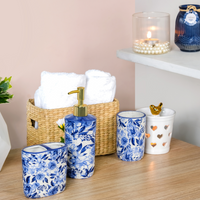In the wise words of singer Ellie Goulding… “We’re going to let it burn”.
Only kidding. We’re not. But we are going to talk about the original source of light- the humble candle.

Candles are a major part of life and home decor, but little is known about their origin. So we’ve decided to fix that with a quick history lesson. So grab your notebooks, and settle in dear reader, because things are about to get lit.
The Origins:
Candles have been used as a light source for thousands of years, over 5000 years to be exact. In fact, the first recorded use of a candle dates back to the ancient Egyptians. Using the pithy core of reeds and melted animal fat from cows and goats, they made rushlights and torches. However, unlike the traditional candles we see today, rushlights didn’t have a wick.
The First Wick:
While ancient Egyptians are often credited with the use of wicked candles, it’s the ancient Romans who pioneered their creation. They crafted candles by repeatedly dipping rolled papyrus into melted beeswax or tallow- a purified form of animal fat- until the papyrus resembled what we recognise as a candle. These early candles were then used to illuminate homes, guide travellers at night, and enhance religious ceremonies.

Moreover, historians have uncovered evidence that other early civilisations also developed wicked candles, using waxes derived from plants and insects. For example, in ancient China, rice paper was used as the wick while wax was extracted from insects and combined with seeds as the actual candle. On the other hand, in India, the fruit of cinnamon trees was boiled to create candles. As you can see, different cultures across the globe were inventing their own versions of candles using locally available resources.
Also visit: https://nestasia.in/collections/candle-stands
Middle Ages:
Significant advancements in candle-making emerged during the Middle Ages with the introduction of beeswax. Unlike tallow candles that produced a strong, pungent odour and excessive soot, beeswax candles burned cleanly. They emitted less smoke and had a sweet aroma. However, due to their high cost, beeswax candles were reserved for the wealthy, leaving tallow candles as the more common choice for everyday use.
The 19th Century:
The next significant advancements in modern-day candle-making occurred in the 19th century. French chemist Michel Eugène Chevreul's innovative work led to the discovery of stearic acid- a saturated fatty acid found and extracted in animal and plant fats. This breakthrough paved the way for the creation of stearin wax and stearin candles, which were known for their hardness, durability, and most importantly, burning cleanly. Stearin candles remain popular in Nordic countries to this day.

In 1834, inventor Joseph Morgan revolutionized the candle industry by creating a machine equipped with a cylinder and a movable piston. This innovation enabled candles to be ejected as they solidified, making mass production possible for the first time. As a result, candles were no longer considered a luxury that only the rich could afford, but rather an affordable commodity for the masses.
It wasn’t until the 1850s that paraffin wax was introduced into the industry. Odourless with a blueish-white colour, paraffin wax was arguably the best thing to have happened to the candle industry up to this point. Not only did it burn cleanly, but it also burned consistently and was more economical to produce. Its only downfall was a low melting point which was soon rectified by adding stearic acid.
However, in 1879, Thomas Edison invented the light bulb. As a result, the need and popularity of candles decreased.
The 20th Century:
Candles experienced a resurgence in popularity during the mid-1980s, becoming cherished as decorative items, mood enhancers, and thoughtful gifts. This renewed interest sparked the introduction of candles in a wide array of sizes, shapes, colours, and even fragrances.

However, it was in the 1990s that the candle industry truly witnessed an unprecedented boom. As a result, for the first time in a century, countries began developing new types of candle waxes. For example, European countries started using palm wax in containers, while agricultural chemists in the United States developed soybean wax.
Candles had evolved from simple sources of light into versatile lifestyle products, reflecting creativity and innovation. This period not only transformed the way candles were made but also solidified their role as essential elements of ambience, self-expression, and everyday living.
In Today’s Day:
Although candles are no longer our primary source of light, their significance in our lives remains as strong as ever. Today, they're a symbol of celebrations. A spark that can initiate the most intimate of romances. A prop that can create the most captivating ambience where we can reap the benefits of aromatherapy. Or, a small decor object that can enhance our home decor by casting a warm, inviting glow that brings joy and comfort all while soothing our senses, making their impact nothing short of remarkable.




















